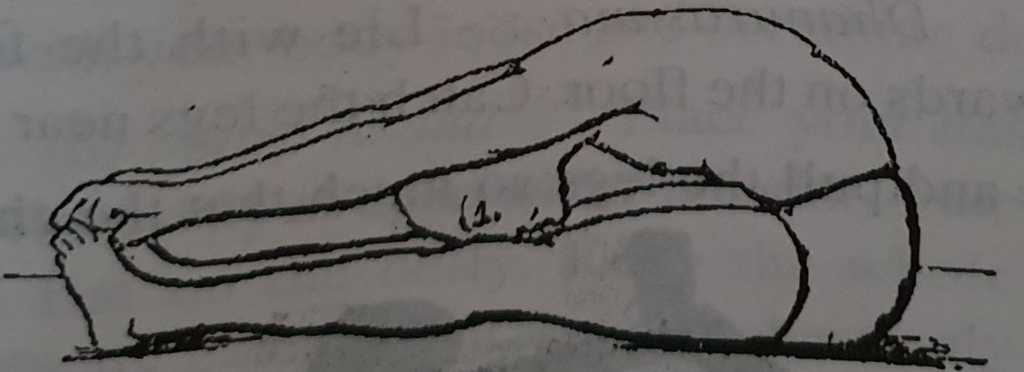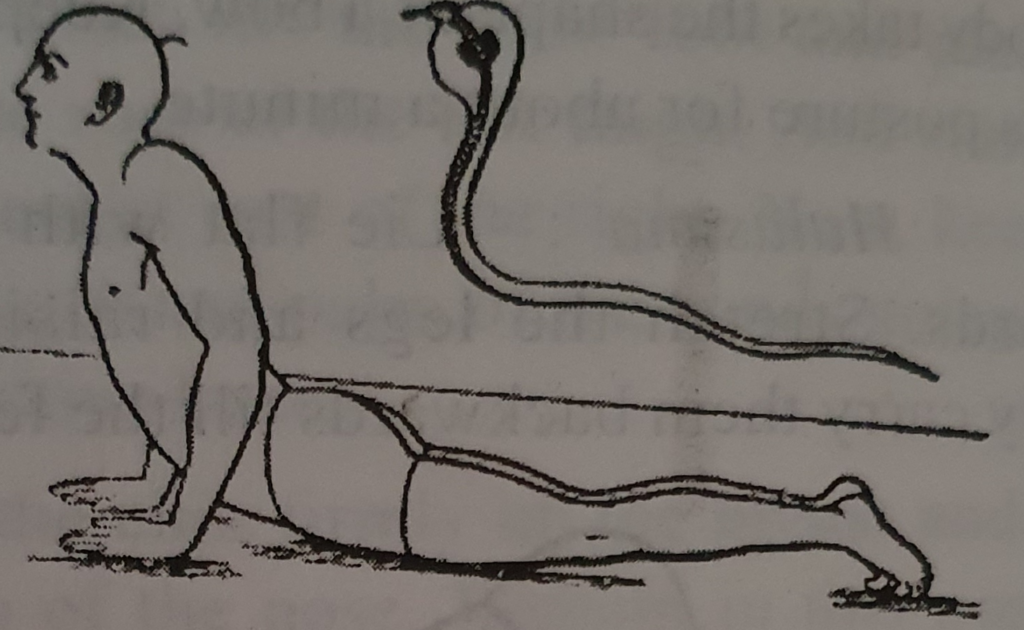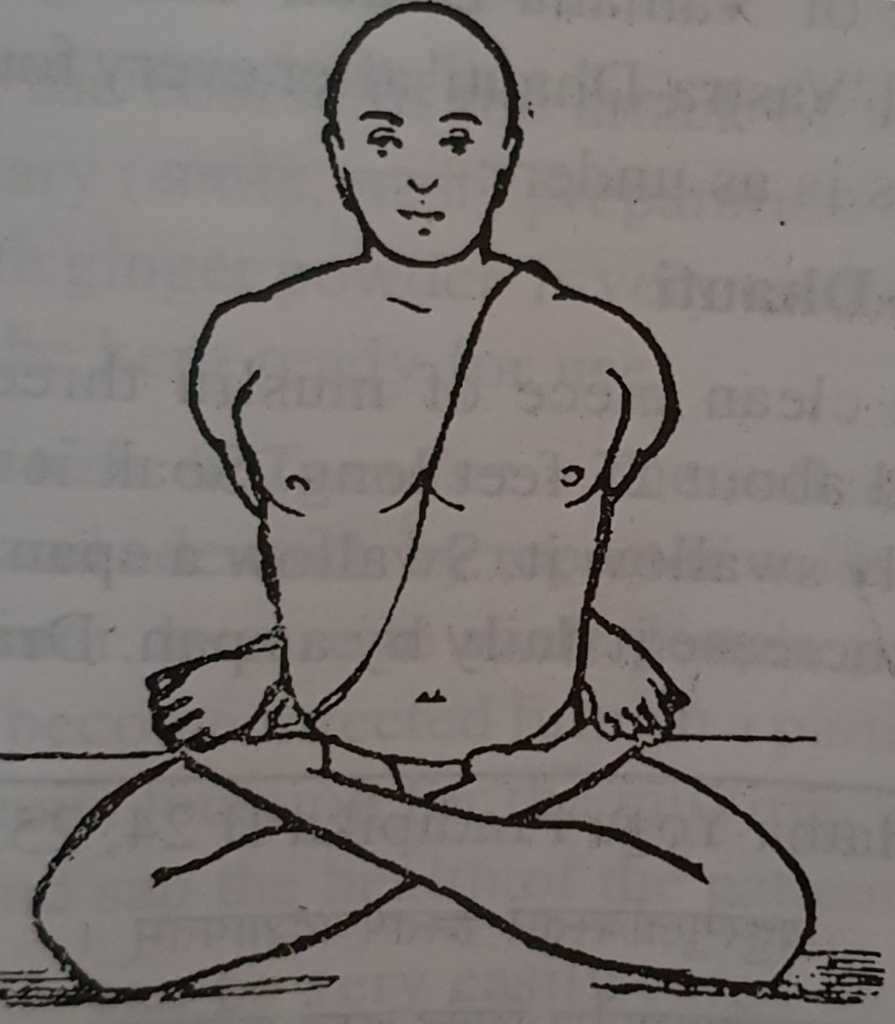Other Asanas for exercise may be either done in the evening or after quarter an hour of the Shirshasana. A set of Asanas can be selected for practice from any good book on Asanas; or the following Asanas may be mastered and practised regularly. They give exercise to almost every muscle of the body, help the circulation of blood, remove constipation, help in the improvement of eye-sight, and are useful for Brahmacharya:-
(1) Paschimottana Asana
Sit with legs stretched out and catch the toes with your fingers without raising the knees from the ground. Then try to touch the knees with the forehead.
(2) Padmasana
Sit with legs stretched forward. Then lift the right foot and place its heel at the root of the left thigh. And similarly the left heel at root of the right. Now, keep the arms straight and palm of the hands going over the respective knee.
Place the chin firmly on the breast and look at the tip of the nose. Remain in this position for two to three minutes. Concentration of the tip of the nose will improve eye-sight.
(3) Sinhasana
Cross the legs as done in the ‘Padmasana’ above. Place the palms upon the knees extending the fingers and direct the eyes. to the tip of the nose, with opened mouth and a concentrated mind.
(4) Dhanurasana
Lie with the face downwards on the floor. Catch the legs near the ankles and pull the legs so much that the chest and the knees both rise up from the ground and the body takes the shape of a bow. Keep yourself an this posture for about a minute.
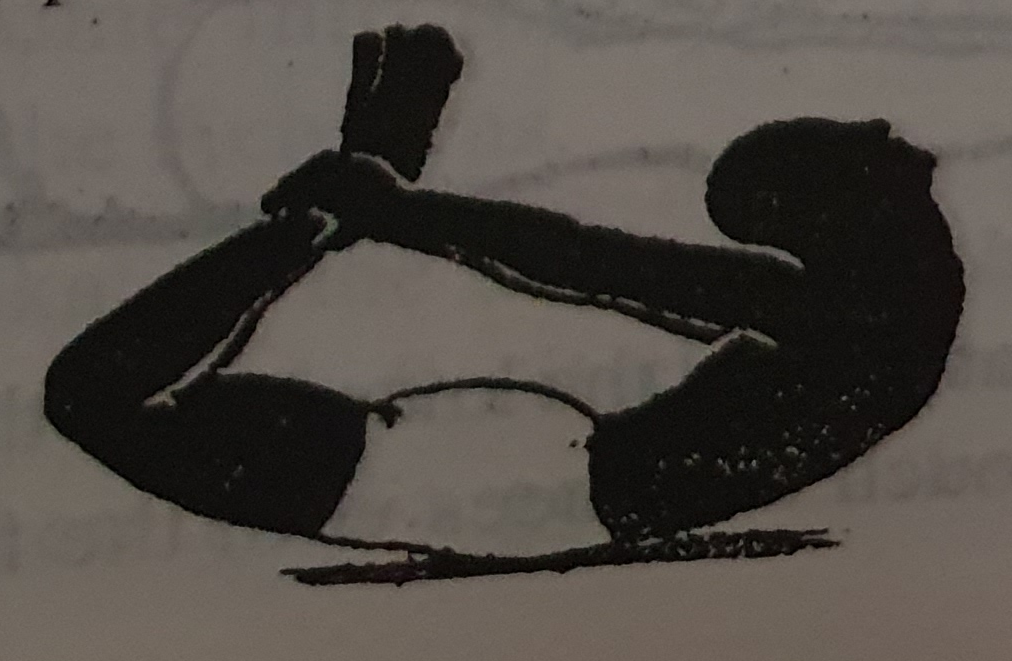
(5) Halasana
Lie flat with the face upwards. Stretch the legs and raising them slowly carry them backwards till the feet touch the ground. Stretch the legs and the waist to the utmost capacity. Then come back slowly and lie with your body loose and breathing deeply.
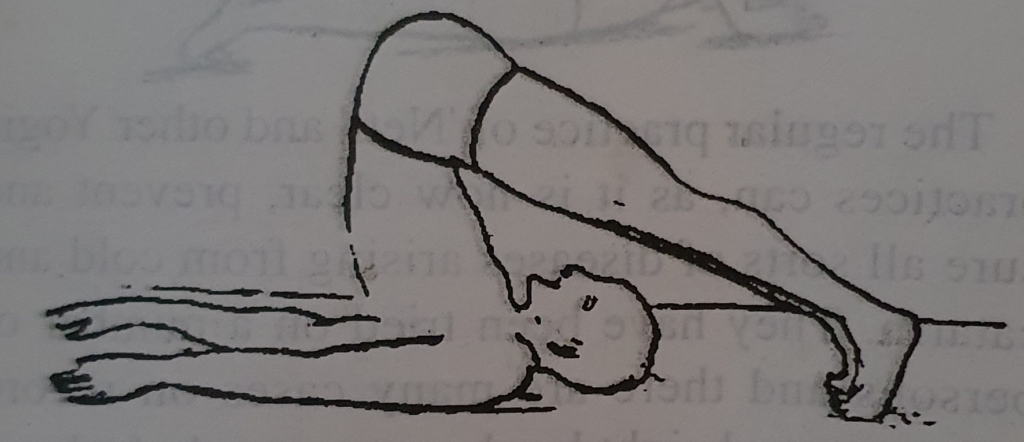
(6) Sarp-Asana
Place your hands on the floor only as apart as the breadth of the chest. Lie fiat on the belly. Keep the whole body perfectly extended. Raise the chest only up to the naval. Throw back the neck. Keep yourself in this posture for about two minutes.
Om Shanti
